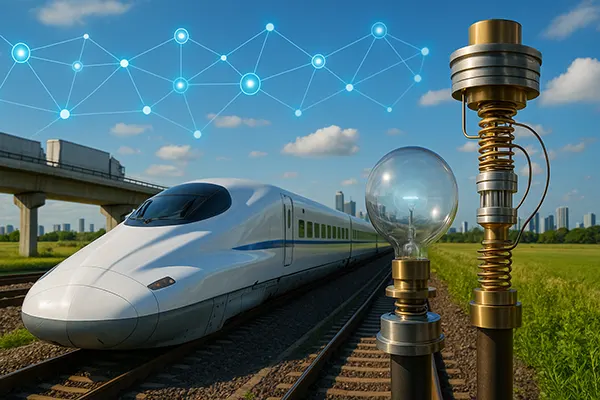
Quantum Sensors in Urban Design: Measuring the Future Cities with Precision
Urban development is entering a new era of precision and responsiveness. Quantum sensors—devices based on the principles of quantum mechanics—are emerging as transformative tools in the architecture of smart cities. These technologies allow urban systems to measure, respond, and adapt to the environment with unprecedented accuracy, unlocking new possibilities in traffic control, pollution monitoring, and infrastructure diagnostics.
How Quantum Sensors Work in Urban Settings
Quantum sensors operate by leveraging quantum states such as superposition and entanglement to detect changes in gravitational fields, electromagnetic radiation, or atomic properties. This makes them significantly more sensitive than conventional sensors. In urban settings, this sensitivity enables detection of minute changes in infrastructure stability, seismic activity, and air quality with extreme accuracy.
One of the most promising applications of quantum sensors is in underground mapping. Urban planners can use quantum gravimeters to detect voids, tunnels, and subsurface structures without excavation. This helps reduce construction risks and improves planning for utilities and transport.
Another impactful use lies in air quality measurement. Quantum-based magnetometers can detect fluctuations in magnetic fields caused by pollutants at lower concentrations than traditional devices. This supports public health efforts by enabling faster identification of dangerous conditions and timely alerts to residents.
Real-World Projects Using Quantum Technologies
In London, the UK Quantum Technology Hub has collaborated with infrastructure developers to integrate quantum sensors for mapping utilities and monitoring rail networks. These sensors provide sub-centimetre resolution in ground-level deformation detection, helping prevent catastrophic failures in older infrastructure.
Singapore’s smart city initiative includes quantum-enhanced LIDAR systems for autonomous vehicles, allowing more accurate detection of obstacles and movement patterns in dense traffic. The precision reduces accidents and supports smoother traffic flow.
Meanwhile, researchers in Munich are testing quantum accelerometers to monitor vibrations in bridges. The goal is to create self-reporting infrastructure capable of early warnings when structural integrity is compromised, especially under stress from heavy vehicles or weather conditions.
Benefits for City Management and Safety
The integration of quantum sensors into city infrastructure brings measurable benefits in public safety, resource efficiency, and environmental sustainability. These devices can provide early warnings for natural disasters, such as earthquakes or floods, giving emergency services more time to respond.
Quantum sensors also contribute to smarter resource distribution. For example, water utilities can use them to detect leaks or inefficiencies in distribution pipelines with higher accuracy, reducing waste and lowering costs for municipalities.
From a safety standpoint, traffic management systems equipped with quantum technologies can dynamically adjust traffic lights or reroute vehicles based on real-time data. This not only reduces congestion but also minimises accident rates in high-risk zones.
Environmental Monitoring and Climate Resilience
As cities face increasing challenges from climate change, quantum sensors offer new tools to build resilience. Their ability to detect subtle changes in soil moisture and temperature profiles allows better prediction and management of urban heat islands and drought conditions.
In coastal cities, quantum gravimeters can be used to monitor sea-level changes with high precision. This information supports the design of more adaptive flood defences and urban zoning strategies to protect vulnerable communities.
Moreover, sensors integrated into public buildings and transportation systems can track long-term environmental data. This provides essential input for climate policy decisions and helps cities meet their sustainability targets with evidence-based planning.

Challenges and Future Developments
Despite their enormous potential, quantum sensors are still in the early stages of deployment. Challenges include the high cost of production, the need for cryogenic environments in some cases, and the complexity of integrating them with existing systems.
However, as miniaturisation advances and costs decline, we can expect quantum technologies to become more accessible. Public–private partnerships and academic collaboration are driving pilot programmes that test these tools in diverse urban settings across the globe.
Standardisation will also play a crucial role in scaling. Developing common frameworks for data collection, calibration, and interoperability will allow cities to adopt quantum sensing technologies more broadly and with greater confidence in their outcomes.
The Role of Policy and Regulation
To maximise the benefits of quantum sensors, governments must establish regulatory standards that encourage innovation while ensuring privacy and safety. Data generated by these sensors must be handled with care, especially when tied to citizen behaviour or location.
Funding for research and pilot deployment will be essential. Strategic investment can accelerate breakthroughs and lower the barrier for smaller municipalities to adopt quantum technologies in infrastructure projects.
Finally, urban policymakers should prioritise public education. Engaging local communities and explaining how these advanced tools contribute to their well-being will foster trust and acceptance—crucial factors in the success of any urban innovation.
